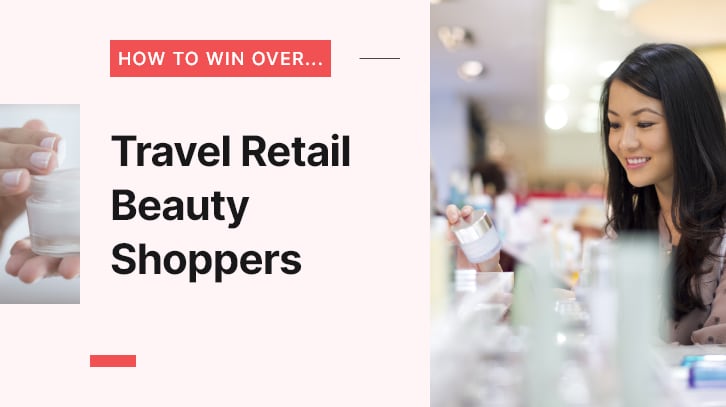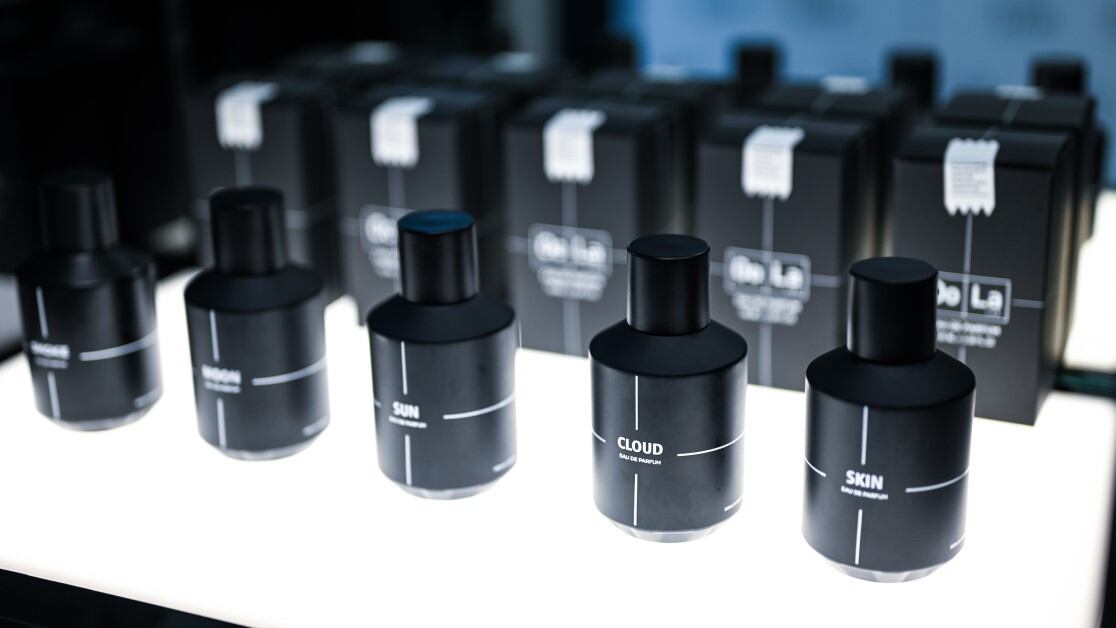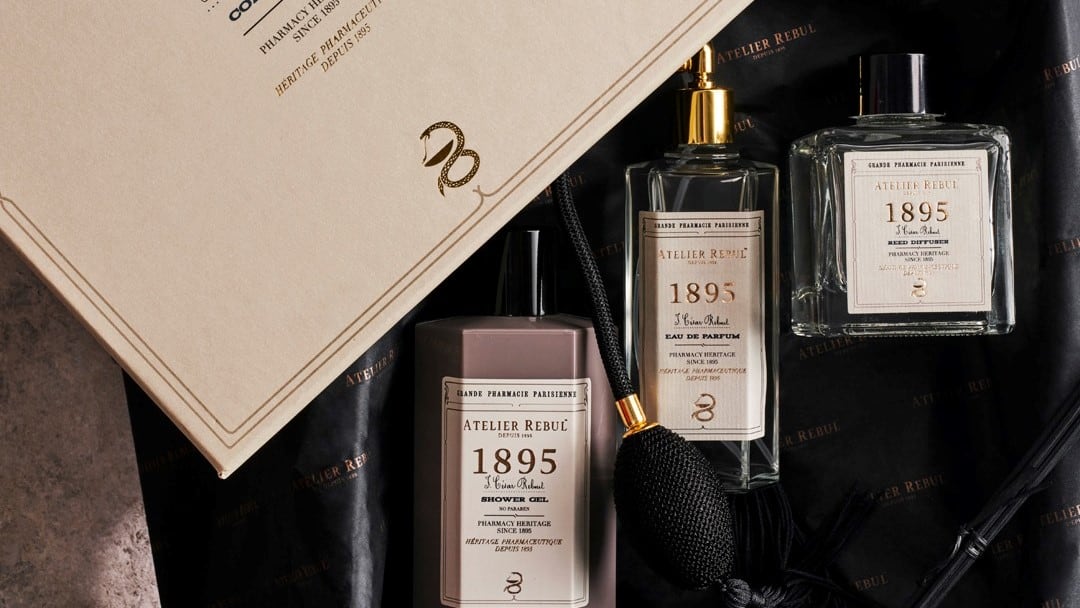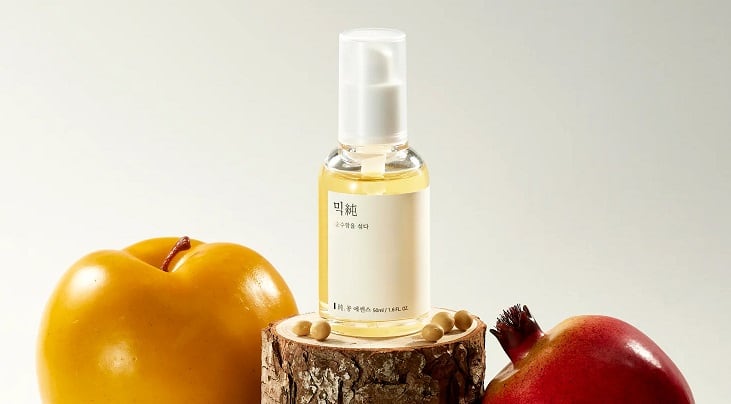According to the World Economic Forum (WEF), 2024 marks the year travel and tourism returns to form, with its contribution to global GDP expected to reach pre-pandemic levels this year.
The Mastercard Economics Institute (MEI) paints a similarly rosy outlook on travel, predicting that as consumers continue to prioritise meaningful experiences, they are expected to allocate more of their budget to travel.
Amidst the positive expectations, in reality, the numbers have been more varied across Asia Pacific, signalling that each market was recovering at its own pace.
In 2023, Hong Kong International Airport and Macau International Airport saw passenger recovery at 55% of 2019 levels. In South East Asia, Singapore’s Changi airport saw its passenger levels recover up to 86% while Malaysia’s airport data reported recovery at 78%.
As we approach the halfway mark of 2024, we have seen some record-breaking travel, such as in Japan, which welcomed over three million passenger arrivals in March alone, spurred on by the advantages of the weakened yen.
The market has also seen a growing number of Indian travellers as travel becomes more democratised. The number of Indians travelling abroad surging with arrivals to Japan and the US were 53% and 59% above 2019 levels in March.
Against this backdrop, Erik Juul-Mortensen, president of the Tax Free World Association (TFWA), emphasised the pressure that the travel retail market was facing in APAC.
“APAC has powered duty-free and travel retail’s growth over the last three decades and is rapidly regaining momentum following the difficult COVID years. While this region’s dynamic potential is undoubted, the current market presents a more nuanced picture. The rate of post-pandemic recovery varies widely across APAC,” he said during this year’s TFWA APAC exhibition.
“Beyond the passenger numbers, duty-free shopper habits in the region are evolving, with a shift from gifting towards buying for self, from planned purchases towards a more impulsive approach, and reduced participation among younger age groups, which should ring alarm bells for us all.”
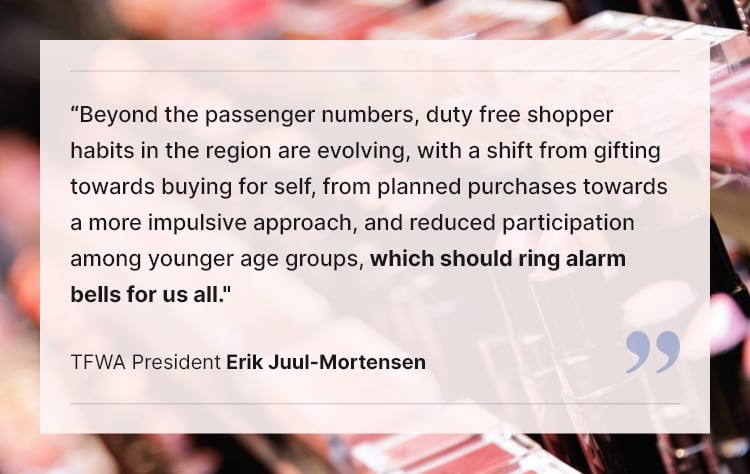
Recovery in progress
During this year’s TFWA APAC exhibition in Singapore, I was gently reminded by more than one travel retail professional that it was best not to mention “the C-word”.
“COVID is a dirty word, no one even says it. Saying post-pandemic is about as far as it goes,” said Mark Brewer, founder and managing director of On The Mark, a travel retail distributor and consultancy specialising in beauty.
The reluctance to even harken back to the events of the last four years is completely understandable. According to United Nations specialised agency UN Tourism, Tourism Direct Gross Domestic Product (TDGDP) in 2019 was valued at USD3.5tn.
This dropped to USD1.7tn in 2020 as international travel plunged by 72% in 2020, setting the number of travellers back to what it was three decades ago. It placed over 100 million direct tourism jobs at risk, especially in micro, small and medium sized enterprises, which represented 80% of the industry.
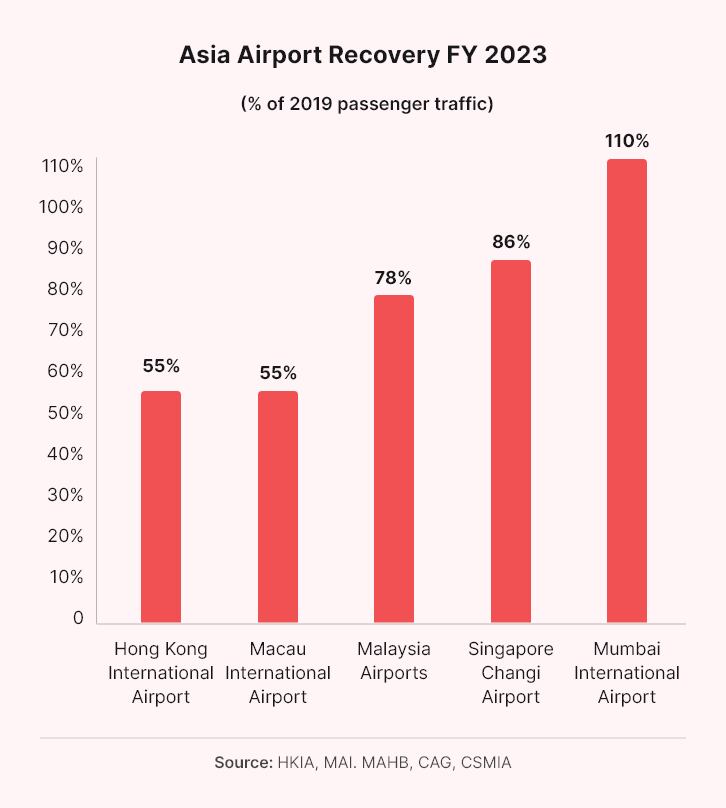
Four years on, the APAC travel retail market is still recovering from the impact of the global COVID-19 pandemic. The good news is that the light at the end of the tunnel seems to be bright.
“We are still in the recovery phase; I think everyone is quite aligned on that one. We are about to reach, and in some specific regions we have already reached 2019 traffic. This is the good news,” said Mona L'Hostis, marketing director global travel retail, L’Occitane Groupe.
“This year has been deemed the normalisation year whereby the Asian airports are all back to business with recovering traffic. Whilst customers spend are in general lower than before, there are still plenty of opportunities for us to work on recruitment and conversions via interesting brand activations,” added Yumie Chia, general manager, APAC travel retail, Elizabeth Arden.
Travel retail beauty companies have observed that the recovery in APAC has been slower than anticipated. It has attributed this to changing consumer behaviours that are reflected in the wider beauty market, with more economically conscious shoppers.
“There are a lot more facets to recovery than just passenger numbers. While we saw borders opening last year and more travel happening, we also saw across all markets that passenger perceptions have changed. They are more cautious about how much they have to spend and where they want to spend it,” said Tatia Hudson, account manager, On The Mark.
Michelle Tong of Kenvue noted that beauty brands were contending with several significant challenges.
“Firstly, there's the widespread impact of the Daigou crackdown, which has led to a decline in sales for many brands. This crackdown has disrupted the traditional channels through which products were procured and distributed, posing operational hurdles for beauty companies operating in the travel retail space,” said Tong, who is the regional business development associate director, travel retail at Kenvue.
“Moreover, despite the increase in passenger numbers, particularly in regions like China, beauty brands are encountering muted growth. This phenomenon can be attributed to a shift in consumer behaviour, with travellers becoming increasingly discerning and strategic in their spending habits. As such, brands are facing the challenge of adapting their marketing and sales strategies to resonate with these savvy consumers, who prioritise value and authenticity in their purchasing decisions.”
Consumer shifts: All about experience
Today, travellers are being more rational with their finances and may choose to prioritise accommodation, food, as well as new and different experiences while they travel.
“While they are happy to invest in their plane tickets, they may be look at the priorities like food and beverages. Purchasing cosmetics and skin care is still a secondary thought,” said Hudson.
To connect with today’s travel retail shoppers, L'Hostis said brands needed to be less transactional and creating experience-driven activations and campaigns have become essential.
“When they are at the airport, they have so many things to do, so many activities. They can use the Wi-Fi, they have Michelin chefs in the restaurants – in the end they’re not even entering the shops. So, we need to give them excuses to do so,” L'Hostis said.
One ‘excuse’ the French cosmetics major has conceived is the L’Occitane Hotel, an initiative the brand launched in partnership with the China Duty Free Group (CDFG) at the CDF International Duty Free Complex in Sanya, Hainan.
“With the L’Occitane Hotel, everything is about discovery personalisation. For instance, we have a hair diagnosis tool to really help you look at your scalp and you have some to advise you on your face routine depending on your skin type,” said L’Hostis.
Additionally, the hotel pop-up brings shoppers on an interactive journey through L’OCCITANE en Provence’s key franchises while highlighting the brand's commitment to sustainability.
The activation leverages digital elements such as augmented reality (AR) to bring visitors to the heart of Provence. Visitors also receive a digital passport and a virtual room key which gave them access to purchase exclusive and limited-edition products to their carts for checkout at the Hotel Gift Shop.
“It’s about bringing experiences and services to our consumers. Like I said, we are all facing low conversion rate, lower spending, especially in beauty. We need to disrupt the market and really work in partnership with the retailers to bring them something different,” L’Hostis said.
With the L’Occitane Hotel, the company has managed to overcome the issue of low conversions, she added.
“We are able to convert almost directly, so at the end we have fantastic conversion rate. Four out of five people are buying at the end. We can drive people to our store which is not on the same level.”
On the other hand, Elizabeth Arden has found its winning formula with intimate workshops to connect consumers with its brand story,
Last December, the brand hosted an event for its VIPs, which included high tea as well as activities such as beauty masterclasses and self-improvement talks. The goal was to inspire women with the story its brand founder and Prevage. Emphasising brand values and storytelling has been crucial for the brand’s success in China and the company will continue to leverage on it.
“The demand for skin care still remains strong and presents perfect opportunities for us to re-promote and tell the stories of our high efficacy iconic products such as Ceramide capsules and Prevage. In the second half of the year, we will be conducting official launch activations on our new Ceramide Retinol+HPR capsules and water cream innovations. We will also be conducting beauty workshops to continuously spread the message on Prevage,” said Chia.
Chia added that the firm is also seeking novel approaches for shoppers to experience its fragrances, such as its iconic White Tea fragrance line.
“There is the increasingly popular trend of wellness and sensorial experiences. Our White Tea line fits perfectly well into this category as the scents are comforting and uplifting. We are also exploring new ways to enable our customers to experience our fragrance, and will bring forth a more dynamic, sensorial experience to our customers soon.”
For Japanese cosmeceutical brand, Dr.Ci:Labo, the journey towards conversion starts before travellers takes their first steps towards their departure, especially because education is crucial for the brand.
“Effectively educating transient passengers about Dr.Ci:Labo is indeed a challenge, but we have developed several strategic initiatives to ensure our message reaches and resonates with our key consumer audience,” said Tong.
“Overall, we prioritise providing comprehensive, science-backed educational content, leveraging social media and e-commerce platforms to share detailed information about the benefits of our products and how they complement professional treatments. This helps consumers make informed decisions about their skincare routines, even while on the go.”
In preparation for China’s Golden Week, which took place in May, the brand targeted Chinese tourists in Japan with the help of social media.
“Our social media engagement is particularly robust. We partner with retailers to maintain a strong presence on platforms such as Little Red Book, Weibo, and WeChat. Through these channels, we interact with consumers using mini giveaway campaigns that encourage them to share their experiences and sentiments about our brand and products. This not only fosters a sense of community but also amplifies our reach through user-generated content.”
“Post-COVID, consumer behaviours have evolved. There’s a preference for purchasing through livestreaming and e-commerce platforms offering competitive pricing and the convenience of home delivery. Brand must embrace agile and innovative approaches to navigate these challenges successfully,” said Tong.
“By leveraging technology, data analytics, as well as personalised marketing strategies, brands can create an immersive experience that resonate with the consumers on a deeper level, ultimately driving loyalty and sustainable growth in the travel retail market.”
Hudson emphasised that interactivity has become crucial in the travel retail landscape. The company achieves this by working closely with the people who often make the transactions happen.
“The cabin crew is core to our business. We have to get them excited about the products they are selling in-flight. We do regular face-to-face training, and we give them the tools, we supply them with product because we want them to be able to talk confidently about the product and give their opinions. They are the ones that engage with the passenger and the passenger believes them. It’s like when you go to a big department store, it’s all about the experience,” she said.
Beyond that, it is important that brands offer travellers something unique they cannot get in regular stores.
“We make sure that every single one of our products has a reason to be in travel retail. It could be a travel retail exclusive kit, some point of difference which helps the crew to engage the customer and sell it,” said Hudson.
She highlighted Australian company SLICKHAIR, which offers hair styling products and tools to create the perfect sleek bun à la Sofia Richie – or in this case, a smart and chic flight attendant. Just for travel retail, the brand was able to offer an exclusive set which included a wax stick and a hair mascara to keep hair neat on the go.
Shaking up the shelves
For over two decades, On The Mark has specialised in guiding niche brands into travel retail. Some brand the company works are By Terry, Morphe, Coco and Eve, and Egyptian Magic.
“People want to discover brands they're seeing on social media, they want to see brands that are discovering online through other social communities,” Brewer said.
Over the years, the company has seen increasing demand for niche brands among travel retail shoppers, especially among the younger set of consumers like Generation Z, which is fast becoming the traveller of tomorrow.
“There’s the slightly older customer that leans towards the brands that they trust, perhaps brands with more heritage, but what you are also seeing is a younger more adventurous customers that have the spending power,” said Hudson.
This was drawing brands such as Italy’s Teaology and Turkey’s Atelier Rebul to the travel retail market, which can amplify their brand's global presence.
Teaology entered the travel retail market some 18 months ago and is now available in 50 airports, primarily in Europe. CEO Paolo Bevegni told us that this was considered quite unusual for a smaller brand that is new in the travel retail market.
“This is really a sign of the times. Before, the duty-free operators were very strict and very conservative. It was more space, more Chanel, more Dior – finished. Retailers in the local markets always want something new, but in duty-free it has never been like this.”
Atelier Rebul CEO Nuket Filiba sees this demand for niche brands in travel retail as a huge opportunity, noting that travel retail was important for the brand’s overall global expansion.
“Everything is changing. The consumer doesn’t want to buy something in duty-free they can get anywhere. They want something niche with limited distribution – that’s what’s interesting for them. They want something authentic and travel retail is adapting to that.”
Atelier Rebul is currently only available through duty-free at Istanbul Airport but is eyeing wider expansion, especially in travel corridors such as Shanghai and Singapore.
Larger companies, such as Kenvue, have also recognised the need to inject some excitement into the travel retail market with new brands.
“There is a growing demand for brands that offer differentiation in the travel retail space, particularly those that can provide proven efficacy and cater to specific skin care needs,” said Tong.
“For these consumers, product efficacy is a top priority, and Dr.Ci:Labo stands out by backing its products with robust data and research. This focus on scientifically proven results and high-quality formulations sets us apart from many luxury cosmetic and perfume brands, addressing a unique niche in the travel retail market.”
French beauty giant L’Oréal told us that it was aiming to expand the presence of Aesop in travel retail. One of the firm’s latest high-profile acquisitions, Aesop is an Australian brand known for its minimalist apothecary-style branding. It offers a wide range of cosmetic products, including skin care, hair care, body care, and fragrances.
Aesop is already present in some travel retail markets, but the firm sees even more potential to showcase its “unique consumer value proposition” in new markets such as China, Korea, Japan and Australia.
It is not just new brands travellers are looking for but new categories as well. Hair care is steadily becoming a key category in the beauty travel retail space.
“We’re pushing hair care a lot. This is a category that retailers are asking for. Our anti-hair loss serum is flying off the shelves. We can’t keep it in stock. Already it’s the number one in treatments in Japan. It will launch in China in August, and we are expecting it to be big,” said L’Hostis.
The same sentiment is shared by Australian health, beauty and wellness company EZZ Life Sciences, which is also seeking to expand its hair growth products – which includes shampoos, conditioners, treatments, masks, and supplements – into the travel retail market.
This interest in hair care has also been observed by tech company Dyson, which has set its sights on expanding its hair tools to the travel retail market. Given the importance of beauty in the duty-free space, it sees the expansion as a natural progression for the brand.
Like Dyson, tech wellness company TensCare is also looking to make its way into the travel retail space where it sees potential for its devices, such as its LED facial mask and eye massage device. The UK firm told us that it hopes to tap into the heightened interest in wellness and self-care.
Awakening giants
The APAC travel retail market is brimming with new opportunities in the form of new exciting markets such as India.
India is emerging as the next hotspot for travel retail, driven by its rapidly growing middle class, increasing international travel, and expanding airport infrastructure.
According to a report by MEI, Indian airports registered 97 million passengers for both domestic and international trips between January and March 2024. Around a decade ago, it would have taken a full year to reach such numbers.
The report noted that the growing middle class and their strong desire to travel was driving more Indians to travel “than any time in history” this year.
“India in particular we are seeing it as an emerging market. There’s a lot of growth coming out of India’s airports, we see a lot of investment being put into travel. So that is definitely somewhere that we are looking to expand. If we follow the blueprint of China, where we are with China at full recovery is where India is heading and I think it will be successful,” said Hudson.
L’Occitane, which already enjoys a strong presence in the local Indian market with both L’OCCITANE en Provence and Sol de Janiero, also has its eyes set on expanding into the Indian travel retail market.
In addition to India, Tong also highlighted the potential for skin care brands like Dr.Ci:Labo in Vietnam.
“We're also observing a rising affluence among Vietnamese consumers, particularly in their preference for high end skin care products.
“One notable trend in these emerging markets is the growing appreciation for J-beauty. Consumers are seeking safe, high-quality, and highly effective skincare products which align well with the principles of J-beauty. This presents a significant opportunity for brands to capitalize on this demand by offering products that resonate with the preferences and expectations of consumers in these regions.”
As the travel retail market in APAC continues its recovery, significant opportunities await brands not just in the emerging markets but in the mature ones as well.
“We see plenty of opportunities in all our markets as 2024 is the year every market is springing back to business. Hence, every market is an ‘emerging’ market,” said Chia.
Despite its slow recovery, APAC’s travel retail space remains a rich ground for growth. Not only are we seeing travel retail stalwarts pushing innovation to draw in transient travellers, but we are also seeing newer brands that are eager to participate.
Travel retail remains the ultimate showcase channel for beauty brands. It offers unparalleled exposure to a diverse and international audience, making it a vital and lucrative platform for both established and emerging beauty brands to enter and thrive in.


